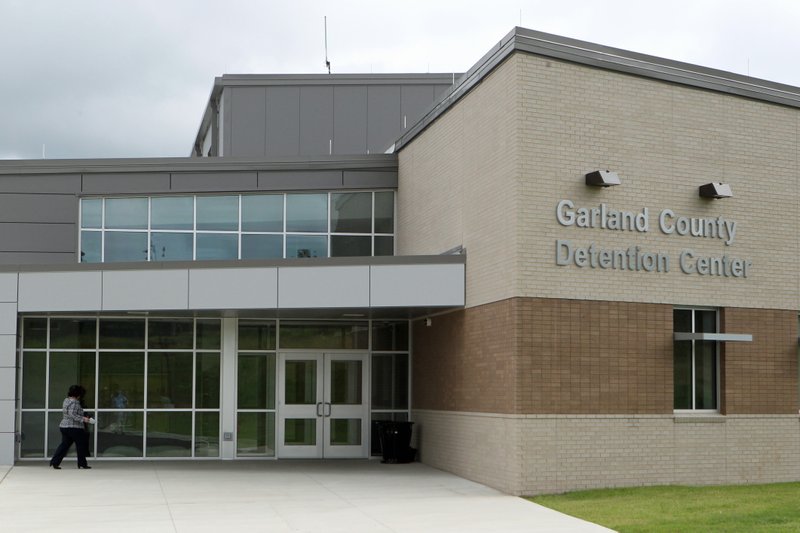The Garland County Detention Center's increasing population may require the county to budget for additional staff in 2019, the jail's lead administrator said.
Current staff levels only allow six of the $42 million facility's eight housing units to be staffed, Chief Deputy of Corrections Steven Elrod said, causing overcrowding that required inmates to be held in the booking area last month. Inmates awaiting transfer to the Arkansas Department of Correction have been sent to other counties to free up space.
"As of Oct. 9, we had zero state inmates, including parole violators, leaving only local inmates in our facility," Elrod said in an email. "Essentially, if we send any more inmates out to other counties, Garland County will have to pay the bill."
The eight units can house a population of 482, but the county budgeted staff for 324 when the jail opened in June 2015. Four units were used when operations at the jail began.
Elrod said temporary bunks were added to two units in late 2016 that allowed six units to house 373 inmates, the maximum amount he said can be managed at current staff levels without complicating the direct supervision method that puts staff amid inmates with no intervening barriers.
Classification, or placing inmates in the unit appropriate to their disposition, risk potential, criminal history and other factors, is key to the system. Elrod said placing inmates accordingly becomes difficult when occupancy reaches 85 percent of capacity, a rate that limits where they can be placed and the supervision tools available to detention deputies.
He said occupancy has not been below 85 percent since February, and the female housing unit has consistently been at or near its 68-inmate capacity this year.
"As of (Thursday), we are in the best shape with our female population that we have been in months having six beds available," he said. "However, this is still 91-percent capacity, which is over the recommended population as outlined by our jail consultant to operate under direct supervision."
Elrod said population numbers are consistent with the consultant's projections for year three of operation.
"Our current state is in line with these projections and as such we should consider opening a vacant housing unit," Elrod said.
The jail was designed for housing units to be supervised by one detention deputy manning a work station at the center of the space. From there, deputies can monitor the day room without their view being obstructed by bars or barriers between them and the inmates. Five of the spaces have cells lining the day room and three are dormitory units. Elrod said one of the vacant units is a dormitory and the other has cells.
Elrod said three of the 85 uniformed positions budgeted for 2018 are unfilled. A fully staffed 12-hour shift has 14 uniformed personnel on duty, including supervisors, he said.
Personnel accounts for $5 million of the Detention Center Facility Operations Fund's $7 million budget, which is primarily funded by the countywide three-eighths-cent sales tax voters approved in 2011 to operate and maintain the 168,000-square-foot facility.
The county finance department said the tax raises about $6.5 million a year, and that the detention fund is projected to begin next year with a more than $5 million balance.
Local on 10/21/2018
